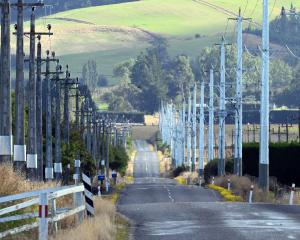The flag referendum should be delayed until after the summer, writes Grant McLachlan.
I empathise with those afflicted with flag fatigue.
Over the past six weeks, we have been bombarded with so many contrived messages and manipulated imagery that it is understandable if we switch off.
Apathy, however, generated this situation in the first instance.
During the period that 10,000-plus designs were submitted to the Flag Consideration Panel, much discussion focused on the ''more entertaining'' designs, such as the ''Laser Kiwi''.
When the long list was announced, coverage narrowed to those designs.
After the announcement of the final four, debate has raged about the poor choices.
Based on several recent polls, none of the final four designs have enough support to replace the current flag.
So how did we end up with such a poor selection?
In short, the panel was starved of quality information.
Public meetings were poorly attended, flag experts were turned away, and they relied on social media for feedback.
One theory is that the panel tried to please too many people by choosing designs with too many conflicting features.
It is more likely that the panel chose 40 designs during a four-hour meeting based on repetition and familiarity, rather than eminence or pertinence.
They were treated like Pavlov's dogs.
In a nutshell, Pavlov conditioning is the use of sensory stimuli to motivate particular responses.
Pavlov blew a whistle before feeding his dogs.
Over time, his dogs salivated when he whistled, even without food present.
In politics and marketing, it is the ultimate goal to convince people to buy a product or vote without much thought.
Cadbury's unique shade of purple, for example, reminds my taste buds of milk chocolate.
I was a campaign director for a National Party candidate. Our core flute hoardings were stolen regularly so we painted the plywood backing a bright shade of blue.
On election day, when we had to take down the core flute, many people were reminded by the blue of what message used to be there.
Conditioned behaviour takes time.
The problem for those pushing for a flag change is that, to accelerate adoption, they have fumbled their methodology and achieved the opposite effect - called cognitive dissonance.
Cognitive dissonance is the changing of a position in order to reduce discomfort and restore a natural balance.
Many have felt so manipulated and overwhelmed that their core instincts have prevailed.
It is not surprising that, after all the social media and celebrity endorsements, we are underwhelmed by the four flag designs.
The simple fact is that none of the four designs resonate.
None say to us: ''That's us!''
Ironically, the greatest interference has been by politicians aligned to a flag change.
John Key has publicly stated that he prefers our national symbol, the silver fern, on our national colour, black, but the contrived nature of his focus group-generated catch phrases and social media hype has galvanised revulsion.
Mr Key has flip-flopped over the colour black.
After Waitangi Day this year, he associated black with Islamic State.
After the last Eden Park test, where most of the crowd wore our national colour, he felt proud.
A design that I submitted, which features Thomas Ellison's silver fern on the pattern of the ribbon from the New Zealand War Service Medal, has gained most of its support from expats, who have strong feelings of what it means to be a Kiwi.
They have not been exposed to the same level of obfuscation as Kiwis at home. Quoting John Key, to them my design ''screams New Zealand''.
By many accounts, we are afflicted by an epidemic of flag fatigue.
Several commentators and politicians have suggested that the referendums be delayed so that the country can have a breather, enjoy the Rugby World Cup, and use the summer to regather our thoughts.
Considering that $17.3million is yet to be spent on the referendum process, we should take our time to make sure it is well spent.
Taking time to properly review all the submitted designs is a good place to start.
• Grant McLachlan is an Otago marketing and finance graduate and a designer of The Black & Silver flag.
I can imagine a new condition appearing in a medical journal:
Flag fatigue (psychology) - An acute over-exposure to unfamiliar visual stimuli that conflict with traditional norms, especially in New Zealand. Symptoms include irritation, lack of concentration, and, in severe cases, angry outbursts, headaches, and social withdrawal. It is a dissonant reaction to contrived Pavlov conditioning. Is highly contagious. Recommended treatment: resonating stimuli and social media avoidance. In epidemic situations, a summer holiday and a delayed referendum should restore cognisance.











